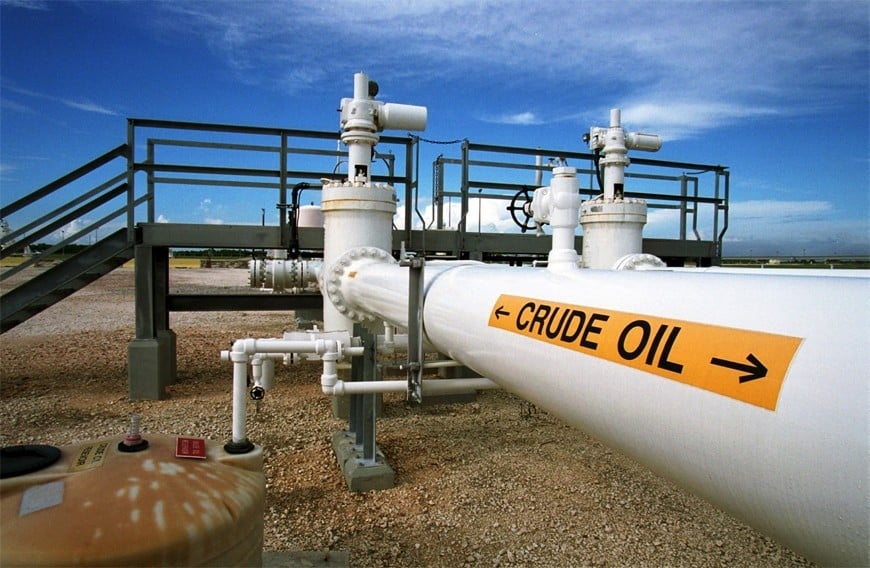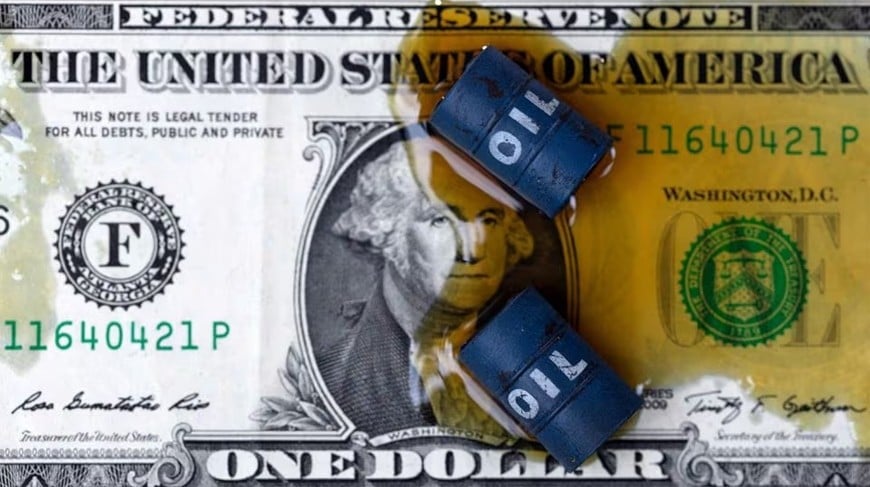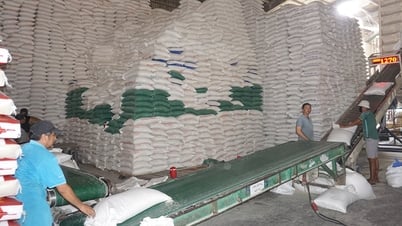World oil prices
According to Reuters, at the beginning of the trading session on May 14, WTI oil prices unexpectedly fell slightly, while Brent oil remained "anchored" at the closing level of the previous trading session. This decline in WTI oil is believed to be due to the increase in US oil inventories.

Data from the American Petroleum Institute showed that in the week ending May 9, US oil inventories increased by 4.287 million barrels, in stark contrast to analysts' expectations of a decrease of 2.4 million barrels.
At the end of the trading session on May 13, oil prices continued to gain nearly 3%, strongly supported by the temporary tariff cut between the US and China and a better-than-expected US inflation report.
Brent crude rose $1.67, or 2.57 percent, to $66.63 a barrel. WTI crude rose $1.72, or 2.78 percent, to $63.67 a barrel.
Both Brent and WTI crude oil prices rose about 4% after the US and China agreed to sharply reduce import tariffs for at least 90 days. The deal also boosted Wall Street stocks and the dollar.
“We didn’t participate as much as other markets did in the China boom, so we’re playing catch-up,” said John Kilduff, partner at Again Capital LLC, explaining why oil prices have nearly doubled since the previous session. The consumer price index (CPI) data released on May 13 has given the Federal Reserve room to start making some moves, he said.
Reuters reported that the US PCI rose 0.2% in April, 0.1% lower than economists had expected. Notably, in the year to April, the PCI rose only 2.3%, the smallest annual increase in four years, prompting JPMorgan Chase and Barclays to cut their forecasts of a US recession in the coming months.
The more benign inflation readings are likely to be welcomed by the Fed, which has kept its benchmark interest rate unchanged since its last cut in December 2024. The US central bank has paused rate cuts amid concerns that the trade war could reignite inflation.
"All the numbers are positive. Inflation, economic data are supportive of prices," said Phil Flynn, senior analyst at Price Futures Group.

Limiting the rally in oil prices during the session was OPEC+’s plan to increase oil exports in May and June. OPEC has increased oil production more than previously expected since April. The group’s May output is likely to increase by 411,000 barrels per day.
Meanwhile, Reuters also reported that Saudi Arabia's crude oil supply to China will stabilize in June after hitting its highest level in more than a year last month, following OPEC+'s decision to increase production. Saudi Arabia is China's second-largest oil supplier after Russia.
Domestic gasoline prices
Domestic retail prices of gasoline on May 14 are as follows:
E5 RON 92 gasoline is not more than 18,777 VND/liter. RON 95-III gasoline is not more than 19,179 VND/liter. Diesel oil not more than 16,809 VND/liter. Kerosene not more than 16,941 VND/liter. Fuel oil not exceeding 15,533 VND/kg. |
The above domestic retail prices of gasoline and oil will be adjusted by the Ministry of Finance and the Ministry of Industry and Trade in the price management session on the afternoon of May 15. Due to the continuous increase in world gasoline and oil prices last week and in recent trading sessions, domestic gasoline and oil prices will likely end their downward trend.
In the most recent price adjustment, the price of E5 RON 92 gasoline decreased by 377 VND/liter, RON 95-III gasoline decreased by 407 VND/liter, diesel decreased by 550 VND/liter, kerosene decreased by 623 VND/liter and fuel oil decreased by 665 VND/kg.
Since the beginning of the year, domestic gasoline prices have undergone 19 adjustment sessions with 9 sessions of decrease, 7 sessions of increase and 3 sessions of opposite direction.
Source: https://baolangson.vn/gia-xang-dau-hom-nay-14-5-gia-dau-wti-bat-ngo-giam-nhe-5046953.html



![[Photo] Hungarian President begins official visit to Vietnam](https://vphoto.vietnam.vn/thumb/1200x675/vietnam/resource/IMAGE/2025/5/27/ab75a654c6934572a4f1a566ac63ce82)

![[Photo] Vice President Vo Thi Anh Xuan, French President Emmanuel Macron and his wife visit Hanoi University of Science and Technology](https://vphoto.vietnam.vn/thumb/1200x675/vietnam/resource/IMAGE/2025/5/27/267b6f2bdf3e46439f081b49f6ec26b1)
















































































Comment (0)